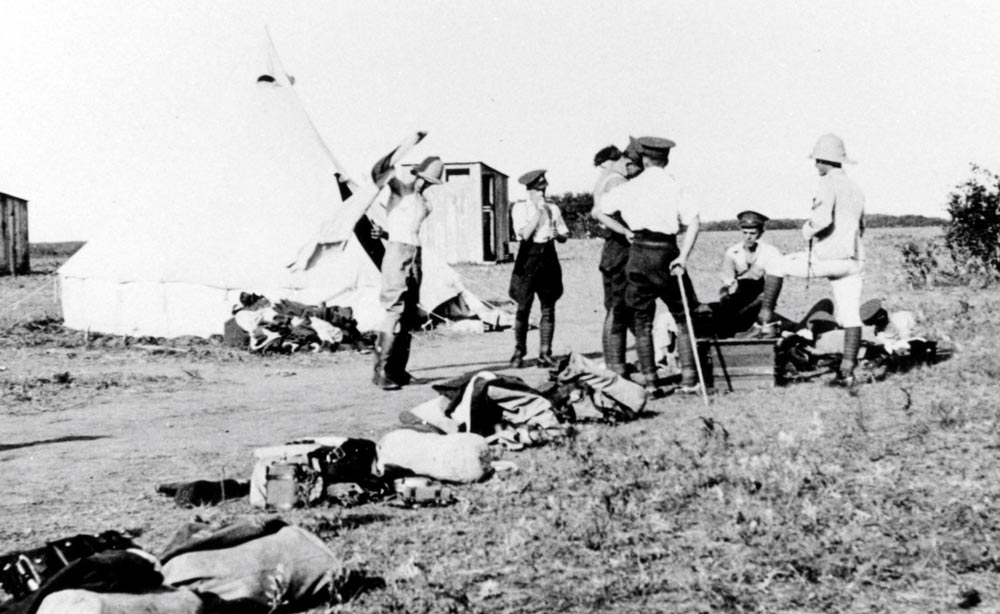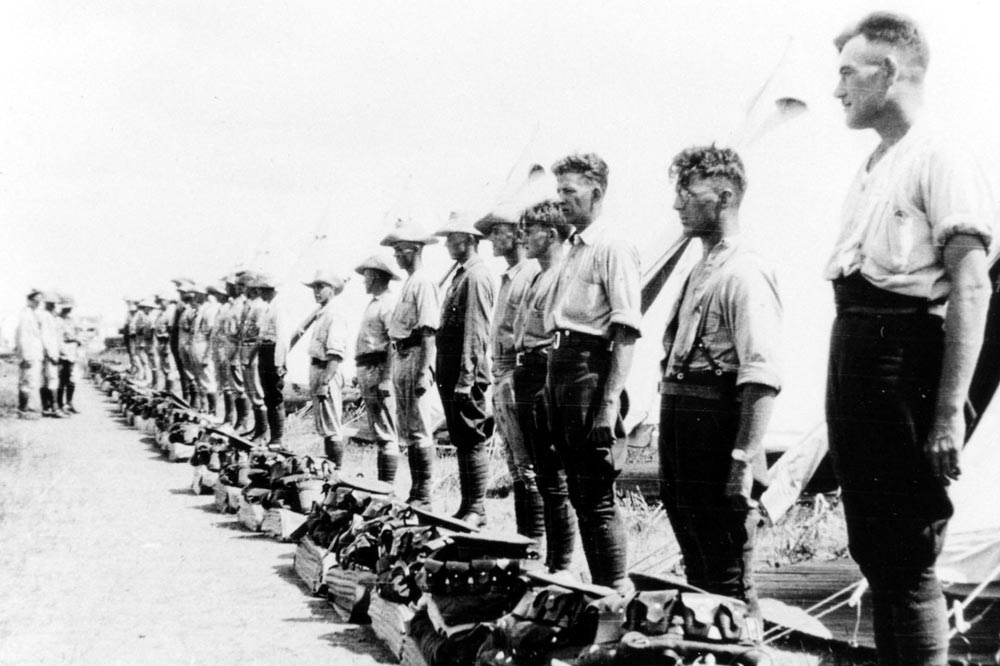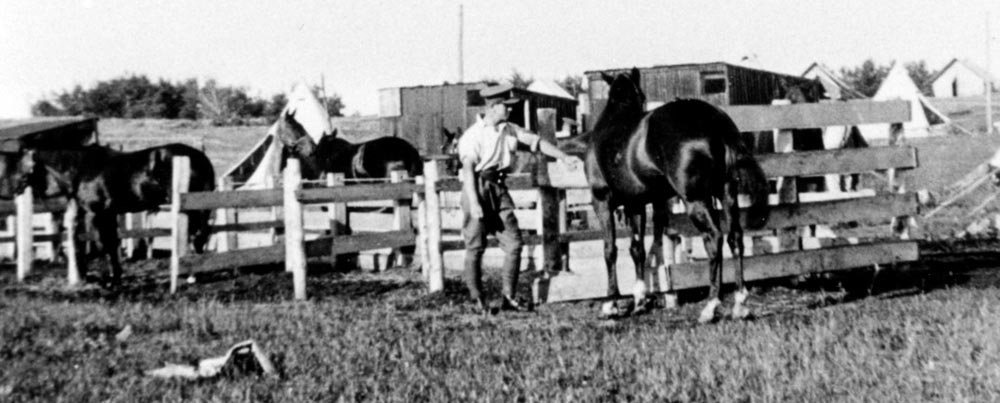
A collection of rare photographs depicting Camp Shilo in the 1930s represent snapshots of the early history of this Army training Base, with militia units from across Manitoba participating in summer training camp showcasing canvas tents, summer dress uniforms, and a few permanent buildings. Photos RCA Museum’s archives

Andrew Oakden
Stag Special
I recently found a collection of rare photographs depicting Camp Shilo in the 1930s.
The photos represent snapshots of the early history of this Army training Base, with militia units from across Manitoba participating in summer training camp showcasing canvas tents, summer dress uniforms, and a few permanent buildings.
In 1910, the Canadian Militia selected the Shilo territory for training purposes, but the ground was impassable during summer due to having no access road. Consequently, the militia found lands north of Shilo for the initial training camp, and Camp Sewell opened in 1910.
Following the First World War, the Canadian Militia underwent a retrenchment period and shelved or cancelled most building projects.
However, Camp Sewell was not ideal as a training camp due to potentially unsafe land, and the Canadian Militia sought new ground to the southwest.
Fast-forward to the mid-1920s, and the Canadian Militia wanted to build a new training camp in the previously selected Shilo territory. Some early developments occurred in 1925, beginning the long process of moving the camp southwest of the Spruce Woods Forest Reserve on lands between Onah and Shilo.
The new land comprised 70 square miles, ranging from open plains to parklands, along with small bluffs.
The new territory was free of dangerous obstacles such as bogs and swamps.
The first camp cost an estimated $148,000 to construct. The new Base required an access road across the muskeg and swamp — this five-mile road cost $5,000. They needed truckloads of earth and rock to fill the muskeg to create the route.
Along with the access road, they needed the necessary approvals from the Province of Manitoba and the Federal government to create a new military training site in Shilo.
In September 1927, the military recommended abandoning nearby Camp Hughes and moving the camp southwest to it current location.
On July 25, 1928, MGen J.H. Elmsley proposed naming the new site Camp Shilo. In 1933, the Province of Manitoba granted the DND the right to use lands outside the Spruce Woods Forest Reserve in the Shilo area.
Six months later, they received approval to use some land inside Spruce Woods Forest Reserve for training purposes. Camp Hughes held its last Army training camp in 1933.
On June 25, 1934, Crown lands representing portions of the Shilo training area transferred to the DND. The first Camp Shilo summer training camp for artillery, machine gun and mounted units occurred in 1934, with only a small number of permanent structures until the outbreak of the Second World War in 1939.
During the late 1930s, camp development expanded under the Depression-era Relief Act. The early camps were under canvas. By 1939, the military had erected 25 permanent buildings.
With the outbreak of war, Camp Shilo started significant building programs and started to take its current shape, with soldiers training here before being shipped overseas to fight the Germans on battlefields in France, Holland and Belgium.



